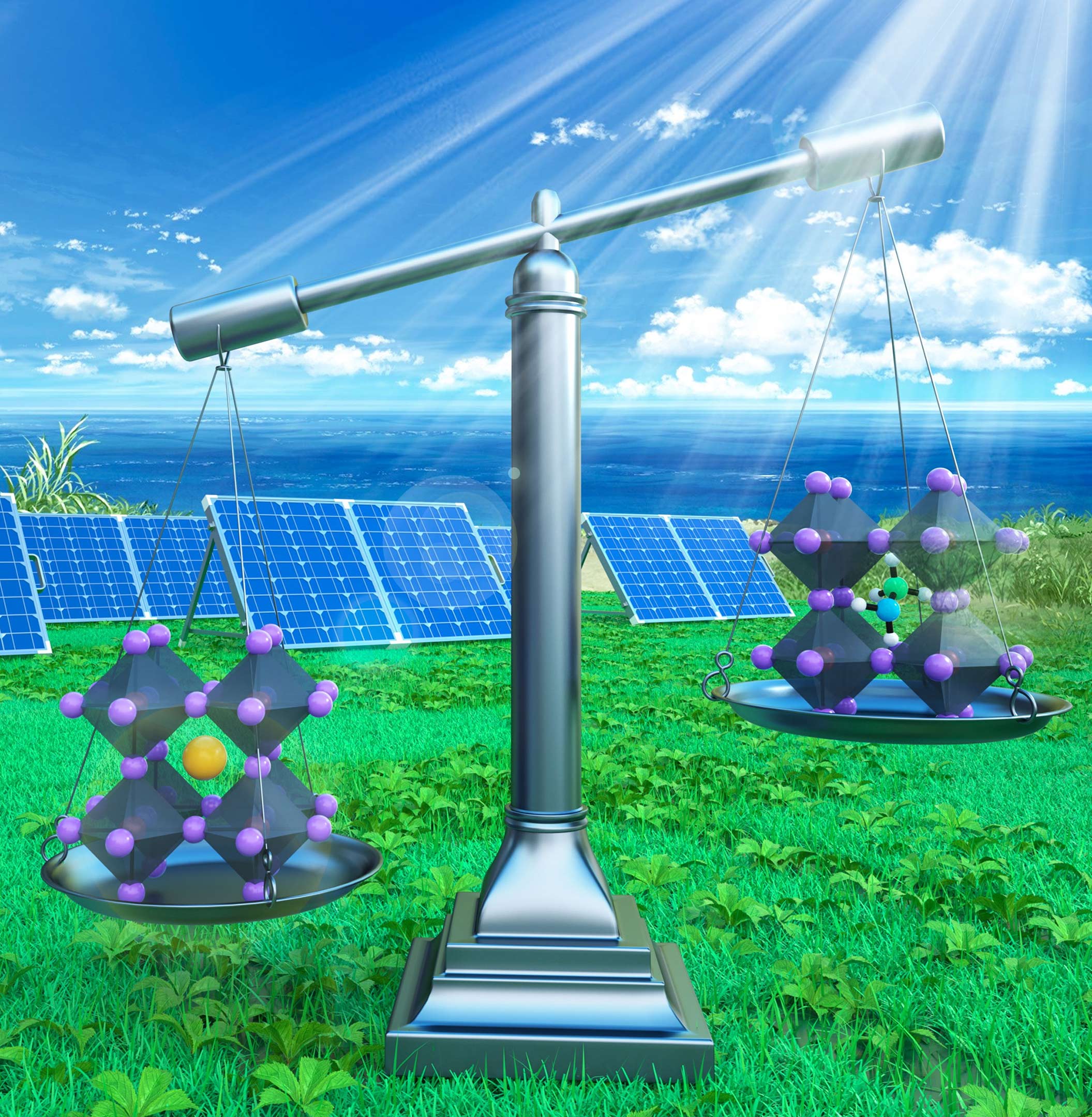Pure inorganic perovskites compare well with their hybrid counterparts in terms of efficiency. Photo credit: Illustration by Xie Zhang
–
New research shows that pure inorganic perovskite solar cells hold promise for increasing solar cell efficiency.
Hybrid organic-inorganic perovskites have shown very high photovoltaic efficiencies of more than 25%. The prevailing wisdom in this field is that organic molecules (containing carbon and hydrogen) in the material are critical to achieving this impressive feat, as they are believed to suppress defect-assisted charge carrier recombination.
New research at UC Santa Barbara’s materials division has shown not only that this assumption is wrong, but also that pure inorganic materials have the potential to outperform hybrid perovskites. The results were published in the article “All-inorganic Halide Perovskites as Candidate for Efficiency Solar Cells”, which appeared on the cover of the magazine on October 20, 2021. Cells report physics.
“To compare the materials, we performed extensive simulations of the recombination mechanism,” explains Xie Zhang, the study’s lead author. “When light falls on the solar cell material, the photo-generated carriers generate a current; Recombination at the defect destroys some of these carriers and thereby reduces efficiency. Flaws thus act as efficiency killers.”
To compare inorganic and hybrid perovskites, the researchers examined two prototype materials. Both materials contain lead and iodine atoms, but in one material the crystal structure is complemented by the inorganic element cesium, while in another material there are organic methylammonium molecules.
Sorting out these processes experimentally is very difficult, but cutting-edge quantum mechanics calculations can accurately predict the rate of recombination thanks to a new methodology developed in the group of UCSB materials professor Chris Van de Walle, Turiansky, a senior graduate student in the group with whom he wrote the code to calculate recombination rate.
“Our method is very robust in determining which defect caused the loss of the carrier,” said Turiansky. “It will be interesting to see how this approach is applied to one of the most critical issues of our time, namely the efficient generation of renewable energy.”
Performing simulations showed that common defects in the two materials led to comparable (and relatively benign) degrees of recombination. However, organic molecules in hybrid perovskites can break apart; When a hydrogen atom is lost, the resulting “vacancy” greatly reduces efficiency. Therefore, the presence of molecules is more of a disadvantage than an advantage for the overall efficiency of the material.
Then why is this not observed experimentally? Mainly because it is more difficult to grow high-quality coatings from pure inorganic materials. They tend to take on different crystal structures and more experiments are needed to promote the formation of the desired structures. However, recent research has shown that achieving a preferred structure is very feasible. The difficulty, however, explains why pure inorganic perovskites have not received much attention.
“We hope that our knowledge of the expected efficiency will stimulate further activity in the manufacture of inorganic perovskites,” concluded Van de Walle.
Reference: “All-inorganic Halide Perovskites as Efficiency Solar Cell Candidates” by Xie Zhang, Mark E. Turiansky and Chris G. Van de Walle, 11 October 2021, Cells report physics.
DOI: 10.1016 / j.xcrp.2021.100604
The research was funded by the Department of Energy’s Office of Science, Office of Basic Energy Sciences; calculations were carried out at the National Energy Research Scientific Computing Center.
–


